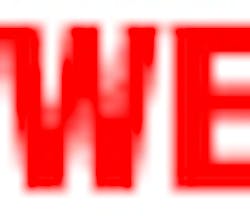Given our country’s sophisticated water and wastewater infrastructure, the average American might not think too much about the value of water. We turn on the tap, and out it flows–the supply is reliable and relatively inexpensive. It’s not until there is a shortage, that we stop to think about how much we send down the drain.
According to the National Climatic Data Center, 38% of the United States (US) was in “moderate to extreme drought” at the end of November 2007. These record-breaking conditions brought water conservation back into the social consciousness for many communities. The fact is that by 2013, water shortages are anticipated in at least 36 states–even in non-drought conditions. Population growth, aging infrastructure, and the unpredictable effects of climate change are stressing water supplies throughout the country. Water conservation is not a passing fad or a subject to be discussed only during a “dry year.” More water professionals and citizens are realizing that increasing efficiency is the most cost-effective and environmentally sound way to reduce the demands on our water resources.
In fact, this linkage between water and energy will grow like never before. As EPA takes action to confront the serious challenge of climate change, we will emphasize water-related aspects of the issue and urge citizens and governments to connect the drops and the watts to save water, energy, and ecosystems. Reducing demand through water efficiency is like buying an insurance policy for a community’s infrastructure. It helps prepare for the unexpected, and reserves supplies for the future. Smart water use extends the life of existing infrastructure, keeping water more affordable and cutting operational costs. And when drought does occur, sound water use practices make us all more resilient, reducing the need for restrictions. Most utility conservation programs rely heavily on public education to change behavior and reduce water demand. EPA created the WaterSense program (www.epa.gov/watersense) in June 2006, knowing markets can be transformed; indeed, the world can be changed when informed consumers connect with efficient, high-performing products and services.
WaterSense is a powerful tool to help drive water efficiency in your community. Stakeholders from across the nation, including water utilities, communities, manufacturers, and retailers, supported EPA in the development of WaterSense. As a result, the program is thriving today. Nearly 120 utilities and local governments are WaterSense promotional partners, advocating for water-efficient practices, and asking consumers and businesses to “look for the label.” The marketplace is welcoming WaterSense labeled products, which are third-party tested and certified to be 20% more efficient, and perform as well or better than conventional models. Manufacturers and retailers are committing precious marketing dollars to building consumer awareness and support. More than 100 WaterSense-labeled toilets from a wide range of manufacturers, and more than 30 labeled bathroom faucets and accessories are available.
WaterSense-labeled certification programs for landscape irrigation professionals are also gaining ground. At the start of 2008, more than 300 landscape professionals were WaterSense partners. These professionals are certified through WaterSense-labeled programs that focus on water-efficient irrigation system design, installation/maintenance, or auditing. Research, as well as draft specifications, are underway to include other water-using products in the program. WaterSense-labeled products that could reach the marketplace between 2008 and 2013 include showerheads, weather-based irrigation controllers, soil moisture sensors, pre-rinse spray valves, and other commercial fixtures.
EPA’s rigorous specifications requiring efficiency and performance, allow utilities to more easily identify and confidently promote water-efficient products and services to their customers. And, the savings potential is astounding. If just one in every 10 American homes replaced old fixtures with WaterSense-labeled toilets and bathroom faucets, the country would save more than 120 billion gallons annually and about $785 million in energy costs required to pump, treat, and heat the water each year. By promoting WaterSense as part of your conservation program, you can strengthen your outreach efforts with a credible, national brand, and a strong, consistent message. By telling your customers to look for the WaterSense label, you’re not only helping people save gallons; you’re fueling consumer demand to drive retailers to stock more water-efficient products, encouraging manufacturers to innovate to meet EPA criteria, and providing incentives to plumbers and irrigation professionals to offer the latest in water-saving technologies.
EPA will continue to increase water efficiency awareness and action beyond its WaterSense program. For example, in 2006, we launched a Water Efficiency Leader awards program (www.epa.gov/ow/wel) to recognize outstanding savers and innovators in six different sectors. In 2007, numerous applications show that US businesses, homeowners, and entire communities are able to reduce the demand for water 10 to 70%, through known technologies and focused desire. We anticipate future winners will inspire even more action and innovation.


